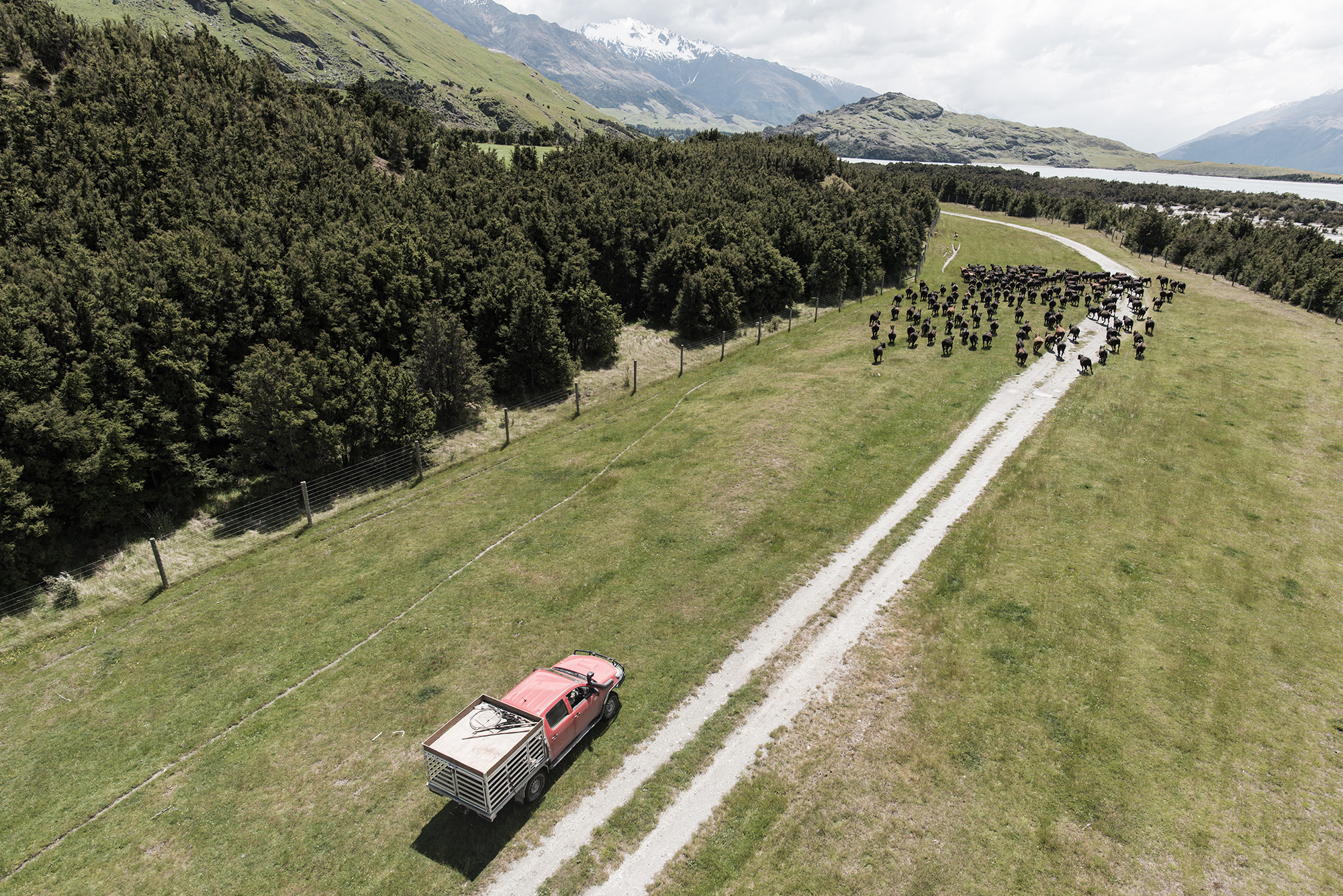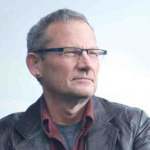 ” floaterposition=”center” floaterdirection=”none”]
” floaterposition=”center” floaterdirection=”none”]
Alternative scenarios for New Zealand’s domestic decarbonisation
This section presents alternative scenarios for domestic decarbonisation in New Zealand in the period to 2050, building on the strategic considerations presented earlier in the report. All of these scenarios involve a significant departure from the technologies and practices commonplace in New Zealand today, although, within this context, they span a range of levels of ambition. At one end, the reductions are insufficient to place the country on a trajectory towards emissions neutrality in the second half of the century, and imply smaller percentage reductions than other countries have committed to. At the other end, the analysis shows how it might be possible for New Zealand to reach net zero emissions domestically by 2050, implying a more extensive percentage reduction in emissions than virtually any other country has committed to.
The different scenarios vary across two key dimensions: the extent of deployment of low-emissions technologies and patterns of land use. Relative to today (shown in the bottom left-hand corner of Figure 4), all scenarios envisage a far greater deployment of low-emissions technologies. However, in Off Track New Zealand, there is no significant change in the pattern of land use. The chart shows that this results in the country not being on a trajectory to achieving net zero emissions domestically by 2100. Innovative and Resourceful New Zealand, by contrast, both involve changes to patterns of land use. In Innovative New Zealand, there is a shift towards a more diversified pattern of land use coupled with greater development of new technologies, whereas in Resourceful New Zealand technology penetration is no more advanced than in Off Track New Zealand, but land use shifts decisively towards forestry. Both scenarios are consistent with the economy moving to domestic net zero emissions by 2100. As such, they are likely to be consistent with New Zealand’s domestic emissions following the same profile of reduction as will be required globally in order to restrict temperature increases to less than 2°C.
Figure 4 also depicts an alternative scenario that has not been developed in detail. Net Zero 2050 presents a combination of the substantial technology development of Innovative New Zealand coupled with the decisive shift towards forestry in Resourceful New Zealand. This would allow the economy to move quickly towards net zero emissions, potentially by as soon as 2050. This is a profile of domestic emission reductions that is likely to be consistent with global reductions needed in order to realise the aspiration of the Paris Agreement to restrict temperature increases to 1.5°C. On the other hand, the chart also shows that with current patterns of land use, no amount of (foreseeable) technology development will put the country on a trajectory towards net zero emissions.
Figure 4. Scenarios differ by the level of technological progress and land-use patterns
Table 2 and Table 3
Table 2. Assumptions and outcomes – macro, energy, industry and waste
| 2014 | Off Track (2050) | Innovative (2050) | Resourceful (2050) | |
| Central assumptions | ||||
| GDP (NZ$ billion 2009–10 constant) | 211.3 | 422.4 | 422.4 | 422.4 |
| Population (million) | 4.5 | 6.1 | 6.1 | 6.1 |
| Energy and transport | ||||
| Emissions intensity (kg CO2-e/GDP) | 0.27 | 0.12 | 0.04 | 0.05 |
| Energy intensity (MJ/$GDP) | 2.86 | 1.33 | 1.25 | 1.36 |
| Energy delivered (GWh) | 164,892 | 150,259 | 140,288 | 153,592 |
| Electricity (total) | 39,206 | 70,926 | 83,414 | 71,347 |
| Heat and direct energy | 107,866 | 120,103 | 116,103 | 123,436 |
| Electricity | 39,148 | 61,668 | 72,784 | 62,089 |
| Direct fuels | 68,718 | 58,434 | 43,318 | 61,347 |
| Transport | 57,026 | 30,156 | 24,185 | 30,156 |
| Electricity | 58 | 9,258 | 10,630 | 9,258 |
| Direct fuels | 56,968 | 20,898 | 13,555 | 20,898 |
| Electricity generation (GWh) | 42,193 | 76,330 | 89,769 | 76,782 |
| Coal | 1,831 | 736 | 0 | 741 |
| Gas | 6,567 | 6,132 | 1,795 | 6,168 |
| Hydro | 24,076 | 29,076 | 29,076 | 29,076 |
| Geothermal | 6,871 | 17,089 | 17,954 | 17,190 |
| Solar | 17 | 1,996 | 3,591 | 12,007 |
| Wind | 2,192 | 20,226 | 36,456 | 120,518 |
| Biofuels | 585 | 1,007 | 898 | 1,013 |
| Other | 54 | 68 | 0 | 69 |
| Renewable (% of total) | 80% | 91% | 98% | 91% |
| Industrial processes | ||||
| HFC refrigerants (MtCO2-e) | 1.5 | 0.2 | 0.2 | 0.2 |
| Waste | ||||
| Waste per capita (kg) | 735 | 620 | 504 | 620 |
| Additional waste recycled | n/a | 8% | 9% | 8% |
| Emissions per tonne waste from CH4 capture | n/a | -12% | -18% | -12% |
Table 3. Assumptions and outcomes – agriculture and forestry
| 2014 | Off Track (2050) | Innovative (2050) | Resourceful (2050) | |
| Agriculture Livestock numbers (million) |
||||
| Dairy | 6.7 | 6.7 | 5.4 | 6.0 |
| Beef | 3.7 | 3.7 | 2.6 | 3.0 |
| Sheep | 29.8 | 29.8 | 19.7 | 22.5 |
| Productivity (index 2014 = 100) | ||||
| Dairy (milk, litres) | 100 | 115 | 125 | 115 |
| Beef (kg weight) | 100 | 115 | 115 | 115 |
| Sheep (kg weight) | 100 | 115 | 115 | 115 |
| Impact on emissions intensity of production from mitigation options (in 2050 for specified GHG) |
||||
| Vaccine + inhibitor (CH4) | ||||
| Dairy | n/a | -16% | -30% | -16% |
| Beef | n/a | 0% | -18% | 0% |
| Sheep | n/a | 0% | -18% | 0% |
| Selective breeding (CH4) | ||||
| Dairy | n/a | -15% | -15% | -15% |
| Beef | n/a | -15% | -15% | -15% |
| Sheep | n/a | -15% | -15% | -15% |
| DCD (N2O) | ||||
| Dairy | n/a | -8% | -8% | -8% |
| Accelerated performance and precision agriculture (N2O and CO2) | ||||
| Dairy | n/a | -10% | -10% | -10% |
| Beef | n/a | -3% | -3% | -3% |
| Sheep | n/a | -3% | -3% | -3% |
| low-emissions feeds (CH4 and N2O) | ||||
| Dairy | n/a | -7% | -7% | -7% |
| Beef | n/a | -1% | -1% | -1% |
| Forestry Average new planting rates 2015-70 (ha per year) |
||||
| Exotic species | n/a | 9,300 | 27,709 | 37,936 |
| Natives | n/a | 0 | 9,091 | 18,182 |
| Long run average carbon stock (tCO2/ha) | ||||
| Plantations | n/a | 372 | 364 | 355 |
| Natives (at 50 years) | n/a | 324 | 324 | 324 |
| Sequestration rates on newly forested land (Mt CO2-e per year) averaging approach excluding harvested wood products 2040-59 average |
||||
| Plantation forests | n/a | 4.7 | 14.1 | 18.9 |
| Natives | n/a | 0.0 | 3.0 | 6.0 |
| 2100 in year | ||||
| Plantation forests | n/a | 0.0 | 0.0 | 0.0 |
| Natives | n/a | 0.0 | 0.3 | 0.6 |
| Land use (million hectares) | ||||
| Farmland | 12.4 | 11.5 | 10.6 | 9.8 |
| Plantation forestry | 1.7 | 2.1 | 2.9 | 3.3 |
Common characteristics of the scenarios
All three scenarios involve significant decarbonisation of the energy sector. Specifically, they involve significant take-up of energy efficiency opportunities, along with almost complete decarbonisation of power, transport and low-grade heat. Many of these opportunities are available at low cost and/or have significant co-benefits. As such, in a world in which all countries are moving towards the Paris Agreement goals, they are consistent with the continued growth of the New Zealand economy and improvement in the quality of life of its citizens.
The amount of electricity generation increases from 42 TWh to 76 TWh in Off Track and Resourceful New Zealand, and reaches 90 TWh in Innovative New Zealand. This implies substantial investment in new renewable capacity leading to a system that is almost entirely based on renewables. It has not been possible to model the precise investment in capacity required to support this level of generation; however, new investment would be needed across wind, hydro and geothermal resources. The cost of providing this new generation is likely to be lower than that of fossil fuel generation. Additional sources of flexibility are required to support this system. Much of this can be provided by demand-side response, which is a low-cost option that is easily facilitated by New Zealand’s flexible power market. Further investment in storage and gas may also be required, as well as in new grids, which would increase costs. New Zealand’s coal-fired power generation is phased out. These options largely rely on mature, proven technologies.
In the transport sector, the passenger vehicle fleet is largely decarbonised by 2050 with 3.5 million electric cars and light commercial vehicles on the roads. Electrification reaches at least 85 per cent in 2050; this is realistic, even factoring in the unusually long lifetime of the New Zealand fleet and slow turnover of the stock. International projections suggest that cost parity with the ICE could be achieved by the late 2020s. Prior to this, a programme to develop charging infrastructure in urban areas where demand is likely to grow initially is likely to require a degree of government support. Electrification spreads to the heavy vehicle sector but at a slower pace, reflecting the greater technological challenges associated with electrifying this part of the fleet, with 25 per cent of heavy vehicles electrified by 2050.
Low-grade heat is substantially electrified by 2050; at least 75 per cent of these energy requirements are provided by electricity. This requires 22 TWh of electricity in 2050, more than doubling the amount of electricity used for low-grade heat in 2014. This growth is concentrated in the residential, retail and services sectors. This switch to electrification can be undertaken as existing building stock and appliances reach the end of their useful life, and it makes use of technologies that are already established.
Industrial process emissions remain flat or decline. Emissions from potent refrigerant gases fall significantly, dropping by 85 per cent from 2014 levels in line with New Zealand’s commitments under the Kigali amendment to the Montreal Protocol. At the same time, uncertainties regarding New Zealand’s heavy industry composition have a major influence, with petroleum, aluminium and iron and steel industries facing an uncertain future. Emissions from the production of building materials increase as construction grows to keep up with population growth.
Agriculture sees continued increases in productivity and reductions in emissions intensities. Farm- and animal-based efficiency improvements are accelerated, while process improvements like precision agriculture further reduce emissions intensity by reducing fertiliser use. Targeted breeding of livestock leads to lower-emissions breeds, cutting the production of methane per animal by 15 per cent. The expansion of new feeding regimes that are higher in fat and lower in fibre reduce methane emissions by up to a further 10 per cent on the farms on which they are introduced. Nitrification inhibitors are reintroduced to treat waste on some dairy farms, improving water quality, while the spread of methane inhibitors in the dairy sector cuts methane further still. Overall emissions per dairy cow decrease by about 23 per cent, and 10 per cent for beef cattle and sheep. Emissions decline by a greater amount per tonne of product, by 33 and 22 per cent respectively. This would require ongoing support for R&D into new technologies, particularly the development and commercialisation of methane inhibitors and vaccines, alongside the expansion of price incentives to the agricultural industry.
Plantation forestry continues to expand over the next 50 years, adding at least 0.5 million hectares to the forest estate. Deforestation halts, and the use of forest biomass is transitioned to longer-lived products and bioenergy. Production of paper remains stable, while the use of forest biomass for construction materials, furniture and other solid wood products increases by at least 75 per cent. Use of biofuels expands for process heat, providing all the intermediate process heat required by the pulp, paper, wood- and dairy-processing industries.
New Zealanders reduce the amount of waste they produce per person, and a greater proportion of methane emissions from waste are captured and combusted. Quantities of organic household waste are reduced through a combination of recycling and composting. A larger share of the waste from construction and demolition is sorted at source and thus diverted away from landfill sites. Unmanaged disposal sites, including farms, are regulated to enable better measurement and management of emissions. These changes largely make use of existing technologies such an anaerobic digestors and methane-capture technologies.
Off Track New Zealand
In Off Track New Zealand, there are no further efforts at reducing emissions, beyond those common to all scenarios. In particular, dairy, beef and sheep numbers remain the same as they are today. Given modest increases in stocking rates, this leads to the amount of land devoted to pastoral agriculture decreasing by about 10 per cent to 2050. Afforestation and changed uses of forest biomass mean that the forest sector remains a net carbon sink; net sequestration averages 11.5 MtCO2-e during 2040–59, compared with 24.4 Mt of sequestration in 2014. Despite the emission reductions from agriculture and energy and transport – 9 MtCO2-e and 12 MtCO2-e respectively – reduced forestry sequestration means that net emissions remain persistently high.
Net emissions in Off Track New Zealand are around 43–50 MtCO2-e in 2050, a 10–25 per cent reduction on today’s levels (see Figure 5).
The appeal of this scenario is that it focuses only on emission reduction opportunities that are low or medium cost (using the definitions in this report) and/or that deliver significant co-benefits to New Zealand. All of the decarbonisation opportunities pursued in this scenario are expected to have abatement costs of around or less than NZ$100/tCO2e, the threshold identified in Section 2. Indeed, the cost of many of these opportunities is already, or is expected to turn, negative over the period to 2050, including much of the energy efficiency potential as well as the electrification of the vehicle fleet. Many of these opportunities also come with significant co-benefits, especially improving health through a better, more insulated building stock and reduced tailpipe emissions.
Off Track is more ambitious than a business-as-usual trajectory. Even though this scenario focuses on low-cost abatement and/or where co-benefits are plentiful, it will still require change in behaviours and economic activity, stimulated by strengthened policy. By 2050, New Zealand would have an entirely different light duty passenger vehicle fleet, more energy provided through electricity, more energy-efficient buildings, and a substantial reduction in emissions per animal. This will require concerted policy effort.
However because it does not involve a significant change in land-use patterns, this scenario does not place the New Zealand economy on a trajectory to net zero emissions domestically by 2100. Even allowing for further emission reductions beyond 2050, the country will remain well above net zero domestic emissions in the period to 2100.
Innovative New Zealand
Innovative New Zealand couples the exploitation of more radical and uncertain technology developments – in both the energy and agriculture sectors– with a move to a more diversified pattern of land use. In contrast to Off Track New Zealand, these changes are sufficient to place the economy on a trajectory to domestic net zero emissions in the second half of the century. It provides a profile of domestic emission reductions that, if matched globally, would likely be sufficient to restrict temperature increases to not more than 2°C above pre-industrial levels, as specified in the Paris Agreement.
The major changes to the energy sector involve a suite of technological advances and/or lower-than-expected deployment barriers:
- Extending electricity to around one-third of high-grade heat demand, reflecting the availability of new electric technologies to provide high-temperature heat (for example, using resistive or inductance heating techniques). The level of electrification of residual medium-grade heat (after the use of bioenergy is accounted for) is also doubled and almost all low-grade heat is electrified.
- In freight, advances in the rail network enable a greater shift from road to rail (up to around one-quarter of freight shifts to rail).
- Faster-than-expected cost reductions for batteries and high uptake of demand-side response allow a greater percentage of wind and solar to be accommodated on the grid (renewables penetration increases from 95 to 98 per cent).
In the agricultural sector, the introduction of vaccines, which are currently being researched, reduces methane emissions and reshapes the emissions profile of pastoral agriculture. New Zealand-based researchers are aiming to produce a vaccine that would reduce emissions from enteric fermentation by at least 20 per cent without any productivity penalty. Enteric fermentation is the source of nearly three-quarters of New Zealand’s agricultural emissions, as such, the development of a vaccine could have a major impact on New Zealand’s emissions profile.
Critically, there is also land-use change. In this scenario, de-intensification of dairy results in lower numbers of more-productive dairy cattle, using an unchanged proportion of land. Reducing stocking rates can be associated with lower emissions intensity and maintained profitability when combined with higher feed-conversion efficiency. At the same time, the reduction in the number of beef cattle and sheep, alongside increased stocking rates, frees up 3.2 million hectares for other uses. Of this, 1.5 million hectares transitions to horticulture production and other crops, and a further 1.5 million hectares is used for new plantations or reverts to indigenous forest by 2050. The combination of changed land-use practices and lower-emissions intensities reduces emissions from livestock relative to the Off Track New Zealand scenario by 10.3 MtCO2-e in 2050. This is somewhat offset by higher emissions from the production of horticulture and crops, which increase emissions by 1.8 MtCO2-e.
The afforestation in this scenario creates a renewed carbon sink. Sequestration from forests and increased carbon stocks in wood products result in sequestration that is 15.3 MtCO2-e higher than in the Off Track scenario, and 2.4 MtCO2-e higher than today.
Accelerated reductions in levels of waste produced, and enhanced methane capture and combustion reduce emissions from waste by a further 1.1 million tonnes, while industrial process emissions remain largely unchanged from the off-track scenario.
This scenario substantially reduces New Zealand’s emissions in 2050 to 12–17 MtCO2-e, a 7080 per cent reduction compared with today’s levels. This is significantly lower than what is delivered in Off Track New Zealand, and is enough to place the economy on a path to net zero emissions by 2100, with long-lived greenhouse gas emissions already below zero by 2050. Compared with today, a larger forestry programme reduces emissions by an additional 2.4 MtCO2-e, with a further 22.4 MtCO2-e of reduction coming from the energy and transport sectors, and 14.9 MtCO2-e of reduction in the agriculture sector.
This scenario delivers a domestic net-zero-consistent economy in a way that provides for a plurality of land uses. The land-use patterns could underpin a vibrant and prosperous rural economy that also contributes to a significant improvement in water quality and reduced land degradation. These benefits are in addition to the health and quality-of-life benefits delivered by the energy sector decarbonisation that is also an integral element of this scenario.
However, it is heavily reliant on a series of technological advances whose feasibility and costs remain uncertain and which, if they fail to materialise, would make this scenario high cost or unattainable. Some recent developments give cause for optimism over the cost of low-emissions technologies. For example, solar PV and battery costs have fallen much more quickly than almost all analysts anticipated just a few years ago. In New Zealand, agriculture emission intensities have fallen significantly, in part due to new technologies and farm practices. At the same time, globally, low-emissions R&D programmes are generally considered to be substantially underfunded, and technologies like advanced biofuels and CCS continue to develop less quickly than initially hoped. To coherently plan on the basis of this scenario, New Zealand would need to be confident that a wide range of low-emission technologies will come to fruition. It would make sense to match this with an increased contribution to the significant scale-up of research spending that is needed for these technologies, in a manner consistent with the country’s emission profile and comparative advantage.
Resourceful New Zealand
Resourceful New Zealand allows the economy to be consistent with domestic net zero emissions (and a domestic profile of emission reductions consistent with the global goal of restricting temperature increases to 2°C) without needing to rely on uncertain technological developments; it does so by making much greater use of the country’s land resource to sequester carbon. In comparison with the balanced land patterns in Innovative New Zealand, a significantly greater proportion of land is allocated to afforestation.
Livestock numbers are lower than in the Off Track scenario but higher than the Innovative scenario. International demand for agricultural products declines, alongside changed consumer preferences and further development of plant-based or synthetic substitutes; however, this occurs at a slower rate than in the Innovative scenario. Across the board, increases in stocking rates enables 2.9 million hectares of pastoral land to transition to other uses.
This is a ‘maximum’ afforestation scenario with an additional 2.3 million hectares of forestry to 2050. Much of the excess pastoral land converts to plantation forestry, 1.6 million hectares are planted by 2050, as the rate of new plantings grows to 55,000 hectares per year. Much of the remaining land is allowed to revert to native forests, with 0.7 million hectares reverting by 2050, providing additional sequestration and connecting native habitats. At the same time, a doubling in the production of horticulture and crops, utilises an addition 0.5 million hectares.
At the same time, the uses of forest products transition away from short-lived products to long-lived, higher-value products. Exports of pulp and woodchips declines, while paper production remains at current levels. Production of long-lived products like sawn timber, construction material and furniture more than doubles, reflecting both their higher rates of carbon sequestration and their potential higher value in domestic and export markets. At the same time, the use of biomass as fuel expands, providing all the medium-grade heat (100–300°C) required by the paper-, pulp- and wood-processing industries, and threequarters of the medium-grade heat required for low-emissions processing of agricultural products.
This increase in forestry, alongside changes to the end-use of wood products, means that the forest sector sequesters an average of 36.4 MtCO2-e per year between 2040 and 2059.
These rates of planting are feasible at low-to-medium emissions prices. New Zealand has a mature forest sector which is highly responsive to emission price incentives. Ensuring that these incentives remain credible and enduring will be crucial to maintaining planting at the relatively high levels assumed in this scenario.
Aside from these differences, the scenario is identical to Off Track New Zealand. New Zealand achieves significant energy efficiency improvements, bases its grid almost entirely on renewables, and electrifies its transport fleet and low-grade heat. In addition, relative to 2014, waste production falls – a greater proportion is diverted from landfill and a high proportion of methane emissions at waste sites are captured and combusted.
This scenario substantially reduces New Zealand’s emissions in 2050 to 14-21 MtCO2-e, a 6575 per cent reduction on today’s levels. This is an emissions level significantly lower than delivered in Off Track New Zealand, and is enough to place the economy on a path to net zero emissions by 2100. Indeed, as with Innovative New Zealand, long-lived greenhouse gas emissions are already below zero in 2050 in this scenario. While Resourceful New Zealand’s larger forestry programme delivers significant abatement, its slower technological progress compared with Innovative New Zealand results in less abatement in the agriculture and energy sectors.
This scenario is attractive in providing a cost-efficient and relatively certain way for New Zealand to move onto a trajectory consistent with a domestic net zero constraint. At an aggregate level, it is consistent with the continued growth of the New Zealand economy and it means that the country is not exposed to the risks of uncertain technology developments. The change in land-use patterns would also contribute to improving New Zealand’s water quality and reducing land degradation.
However, the substantial change in land-use patterns implies significant social and environmental challenges. Socially, it would imply profound changes to rural livelihoods and New Zealand’s rural economy. While many countries will face similar challenges with the move to a low-emissions pathway (for example, countries heavily reliant on coal production), changed land uses may require a difficult transition for rural economies. Furthermore, the expansion of plantation forests represents a lost opportunity to reintroduce native habitat. The heavy reliance on afforestation in the period to 2050 will also increase the urgency of finding alternative emission reduction options and technologies in the period beyond 2050.
Net Zero in 2050
Net Zero in 2050 would combine the forestry growth in Resourceful New Zealand with the technology penetration of Innovative New Zealand. Although this scenario has not been considered in detail in this report, indicative calculations suggest that, in combination with industrial closure in the aluminium, steel and refinery sectors, it would be sufficient to drive New Zealand to close to net zero total GHGs by 2050: reaching about 2 Mt CO2-e. In comparison with the other scenarios, this would be more consistent with New Zealand’s domestic emissions profile following the global profile that is likely to be needed to meet the lower-end (1.5°C) aspirational temperature goal defined in the Paris Agreement.
There may be interest in exploring this scenario in future work. This analysis has not considered the Net Zero in 2050 scenario in detail, largely because it is likely to require all of the elements considered in both Resourceful and Innovative New Zealand, which are explored in detail. It would also represent a scenario that, taking account of New Zealand’s current emissions profile, would represent deeper and more ambitious reductions than have been considered in most international studies, as well as in studies of New Zealand’s emission reduction potential. Nonetheless, as interest around the implications of the Paris Agreement’s 1.5°C temperature goal grows – the IPCC will report in 2018 on the global GHG emission pathways needed to limit global warming to 1.5°C above pre-industrial levels – more detailed analysis of this and similar scenarios that deliver net zero emissions for New Zealand by 2050 may well be warranted.
Choose your future

1
OFF TRACK
NEW ZEALAND
In Off Track New Zealand, there are no further efforts at reducing emissions, beyond those…

2
INNOVATIVE
NEW ZEALAND
Innovative New Zealand couples the exploitation of more radical and uncertain technology…

3
RESOURCEFUL
NEW ZEALAND
Resourceful New Zealand allows the economy to be consistent with domestic net zero emissions…
[interaction id=”594c4897f03c53313d6ee129″]
OFF TRACK NEW ZEALAND
In Off Track New Zealand, there are no further efforts at reducing emissions, beyond those common to all scenarios. In particular, dairy, beef and sheep numbers remain the same as they are today. Given modest increases in stocking rates, this leads to the amount of land devoted to pastoral agriculture decreasing by about 10 per cent to 2050. Afforestation and changed uses of forest biomass mean that the forest sector remains a net carbon sink; net sequestration averages 11.5 MtCO2-e during 2040–59, compared with 24.4 Mt of sequestration in 2014. Despite the emission reductions from agriculture and energy and transport – 9 MtCO2-e and 12 MtCO2-e respectively – reduced forestry sequestration means that net emissions remain persistently high.
[interaction id=”594c4897f03c53313d6ee129″]
INNOVATIVE NEW ZEALAND
Innovative New Zealand couples the exploitation of more radical and uncertain technology developments – in both the energy and agriculture sectors– with a move to a more diversified pattern of land use. In contrast to Off Track New Zealand, these changes are sufficient to place the economy on a trajectory to domestic net zero emissions in the second half of the century. It provides a profile of domestic emission reductions that, if matched globally, would likely be sufficient to restrict temperature increases to not more than 2°C above pre-industrial levels, as specified in the Paris Agreement.
[interaction id=”594c4897f03c53313d6ee129″]
RESOURCEFUL NEW ZEALAND
Resourceful New Zealand allows the economy to be consistent with domestic net zero emissions (and a domestic profile of emission reductions consistent with the global goal of restricting temperature increases to 2°C) without needing to rely on uncertain technological developments; it does so by making much greater use of the country’s land resource to sequester carbon. In comparison with the balanced land patterns in Innovative New Zealand, a significantly greater proportion of land is allocated to afforestation.
– OR –

4
NET ZERO IN 2050
Net Zero in 2050 would combine the forestry growth in Resourceful New Zealand with the technology penetration of Innovative New Zealand….
[interaction id=”594c4897f03c53313d6ee129″]
NET ZERO IN 2050
Net Zero in 2050 would combine the forestry growth in Resourceful New Zealand with the technology penetration of Innovative New Zealand. Although this scenario has not been considered in detail in this report, indicative calculations suggest that, in combination with industrial closure in the aluminium, steel and refinery sectors, it would be sufficient to drive New Zealand to close to net zero total GHGs by 2050: reaching about 2 Mt CO2-e. In comparison with the other scenarios, this would be more consistent with New Zealand’s domestic emissions profile following the global profile that is likely to be needed to meet the lower-end (1.5°C) aspirational temperature goal defined in the Paris Agreement.
VOTE NOW
[interaction id=”594c4897f03c53313d6ee129″]







































Leave a comment